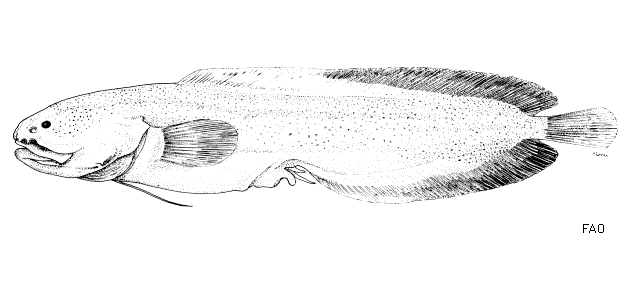| Dinematichthyidae (Viviparous brotula) |
| 7.5 cm TL (male/unsexed) |
|
demersal; brackish; marine; depth range 0 - 9 m |
| Western Atlantic: northern Gulf of Mexico. |
|
Dorsal soft rays (total): 60-71; Anal soft rays: 41-52; Vertebrae: 38-40. Diagnosis: Blunt snout; small distinct eyes, 1.4-1.9% SL in adults; head naked, body covered with imbricate scales; interorbital in adults 5.6-7.7% SL; posterior infraorbital pores 2; rays in dorsal fin 60-71, anal 41-52, caudal 12-15; otolith with fused colliculi; sulcus small; 1 pair of pseudoclaspers with 2 almost equally long supporters (Ref. 55786). |
| Burrows in soft mud bottoms at shallow depths (0.7-6 m) of quiet lagoons, backwaters and saline parts of estuaries (Ref. 7251, 55786). Reported to give birth to very few, about 15 mm long juveniles in each clutch; one female found to have four 5-8 mm long embryos and has a 3.2 mm bivalve in the intestine (Ref. 55786). Probably common where it occurs (Ref. 34024). |
|
Least Concern (LC); Date assessed: 11 August 2011 Ref. (130435)
|
| harmless |
|
Source and more info: www.fishbase.org. For personal, classroom, and other internal use only. Not for publication.

